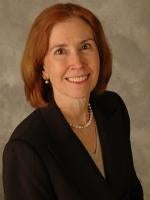Lenders are making loans again. Lenders are much more cautious about the loans they are making and much more thorough with their due diligence on every piece of property. Perhaps the biggest concern for a lender (aside from whether its borrower will default) is the environmental condition of the property. Now more than ever, lenders are fearful (and rightfully so) of exposure to liability for violations of environmental laws following foreclosure and transfer of possession of a commercial property. Generally, Lenders are insulated from such liability; however, they must be careful not to overstep the boundaries of the protections afforded them.
What is CERCLA?
It is mentioned in many commercial real estate loan documents, typically in connection with a representation by a borrower that they are in material compliance with it. "CERCLA" is an acronym for the Comprehensive Environmental Response, Compensation and Liability Act of 1980. This is the primary piece of federal legislation governing events related to the exposure of real estate to hazardous materials in the United States. Most state environmental laws are based on this law. When it comes to commercial real estate (or any real estate for that matter), the last place anyone wants to be is on the wrong side of CERCLA because CERCLA imposes strict liability upon "owners and operators" of real property for penalties and costs related to hazardous waste contamination and clean up. A lender can become an "owner and operator" of real property under CERCLA in several ways, with potential exposure to CERCLA strict liability. There are three exceptions to CERCLA strict liability: (i) an Act of God; (ii) an Act of War; or (iii) Secured Creditor Safe Harbor.
Initially, the Secured Creditor Safe Harbor allowed that a lender who owned or possessed real property for the sole purpose of protecting its security interest in the real property, and who did not "participate in the management of the real property," was excluded from strict liability under CERCLA. Unfortunately, courts disagreed on how to interpret the Secured Creditor Safe Harbor (specifically, when did a lender "own or possess" the real property and what constituted "participating in the management" of the real property?). The Secured Creditor Safe Harbor was later narrowed and more clearly defined.
The U.S. EPA adopted guidelines (which were later codified in CERCLA) to test whether a lender and a lender's actions were protected by the Secured Creditor Safe Harbor. These guidelines attempted to clarify what "participating in the management" of a property means. A two-part test was established to determine whether lenders met this factor:
-
Did the lender exercise control over the management of the borrower's environmental compliance program? In other words, did the lender tell the borrower what to do to comply with applicable environmental laws?
- Did the lender participate in the Borrower's day-to-day decision-making process with respect to environmental compliance and other business operations? Simply collecting rent from tenants or advising the borrower on financial matters related to the property is not considered "participation in management." Other lender activities that do not satisfy this second part include: (i) pre-loan investigations; (ii) loan servicing; (iii) loan workouts; and (iv) foreclosures.
If a lender can prove that: (i) it holds a security interest in real property to secure repayment of money or some other obligation; and (ii) it did not actually participate in management of the property, then the lender is protected by the Secured Creditor Safe Harbor.
What happens after a lender forecloses and becomes the actual owner of the property?
Under CERCLA, a lender must establish it has made commercially reasonable efforts to divest itself of the real property in a commercially reasonable time and on commercially reasonable terms, taking into account market conditions and legal and regulatory requirements. CERCLA does not define "commercially reasonable;" however, lenders can look to the EPA for guidance. The EPA provides that a lender makes "commercially reasonable" efforts to divest the property when the lender lists the property with a broker or advertises the property for sale in an "appropriate publication" (publication of general circulation) within 12 months of foreclosure. It is important to note that lenders who were not protected by the Secured Creditor Safe Harbor pre-foreclosure cannot be protected by the Secured Creditor Safe Harbor after foreclosure. A lender's own acts or omissions during ownership or control of the real property are not protected by the Secured Creditor Safe Harbor provision.
A lender considering making a commercial real estate loan should consider the following "best practices" to avoid CERCLA liability:
-
document everything;
-
avoid active participation in the operational affairs of the Borrower and the property;
-
if practical, have a receiver appointed to manage the property during default and foreclosure;
-
conduct pre-foreclosure environmental due diligence;
-
ensure good environmental management post-repossession or post-foreclosure; and
- carefully document efforts to market the property for sale


 />i
/>i
